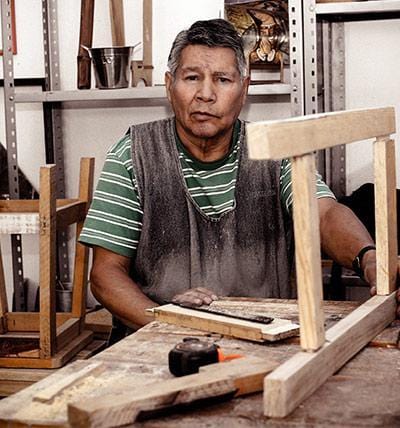Open-plan living is one of the most sought-after layouts in modern homes, offering light, space, and a seamless flow between daily activities. Yet, with that openness comes the challenge of defining each area—living, dining, and kitchen—without the use of walls.
The key lies in thoughtful furniture placement and design choices that create visual boundaries while maintaining harmony across the space.
Whether you’re styling a new build or refreshing an existing layout, here’s how to make each zone feel distinct yet connected.
Start with a Clear Layout Plan
Before you begin moving furniture, take stock of how you use the space. Is the kitchen the social hub? Do you prefer a cosy living area for movie nights or a more open lounge for entertaining?
Once you’ve identified your priorities, you can plan furniture placement that complements your lifestyle. For instance, using stylish chairs for the living room can help create a defined seating area that feels intentional and inviting, even in an open-plan design.
Use Furniture to Create Boundaries
Furniture can act as natural dividers between zones. A sofa positioned with its back to the dining area, for example, can subtly separate the lounge from the eating space without closing it off. Rugs also play a vital role—they anchor furniture groupings and help visually define where one zone ends and another begins. Choose rugs of varying textures or patterns for each area, ensuring they share a cohesive colour palette for unity.
Balance Proportion and Flow
In open-plan settings, balance is everything. Avoid overcrowding one area while leaving another sparse. Opt for proportional pieces that maintain sightlines and allow easy movement throughout. For example, in smaller layouts, consider compact dining tables or round shapes to enhance flow. Ensure that traffic paths between zones—like the walkway from kitchen to dining table—remain clear and intuitive.
Establish a Consistent Design Language
To prevent the space from feeling disjointed, tie all zones together with a consistent design theme. This could mean using complementary materials, matching wood tones, or repeating accent colours across areas. For instance, if your dining table features natural timber, echo that warmth in your lounge through a wooden coffee table or chair legs.
Lighting as a Zoning Tool
Lighting can dramatically influence how each space feels and functions. Pendant lights over the dining table create a focal point, while recessed or track lighting in the kitchen ensures practicality. In the living area, consider floor lamps or wall sconces to cultivate warmth and relaxation. Layering your lighting in this way not only enhances ambience but also reinforces the purpose of each zone.
Add Height and Texture for Definition
Play with vertical elements to subtly define zones. Open shelving between the kitchen and dining area can act as a divider while still allowing light to pass through. Likewise, using textured wall finishes, plants, or tall décor items helps differentiate spaces without adding clutter or visual heaviness.
Keep Flexibility in Mind
One of the advantages of open-plan living is its adaptability. Choose furniture that can be easily rearranged or repurposed as your needs evolve. Modular sofas, extendable dining tables, and lightweight chairs offer the flexibility to modify your layout for different occasions—whether hosting a dinner party or enjoying a quiet night in.
Arranging furniture in an open-plan home is both an art and a science
By balancing flow, cohesion, and purpose, you can create well-defined living, dining, and kitchen zones that feel distinct yet beautifully connected. With careful planning and thoughtfully chosen pieces, your open-plan space can become a harmonious blend of function and style.
ABOUT THE AUTHOR
Aleksandra Djurdjevic
Senior Content Creator
Aleksandra Djurdjevic is a senior writer and editor, covering jewelry, accessories, and trends. She’s also works with services, home décor. She has previously worked as ESL teacher for English Tochka. Aleksandra graduated from the Comparative Literature department at the Faculty of Philosophy in Serbia. Aleksandra’s love for the environment, crafts and natural products over the years helps her continue to be a top expert at Wooden Earth.






